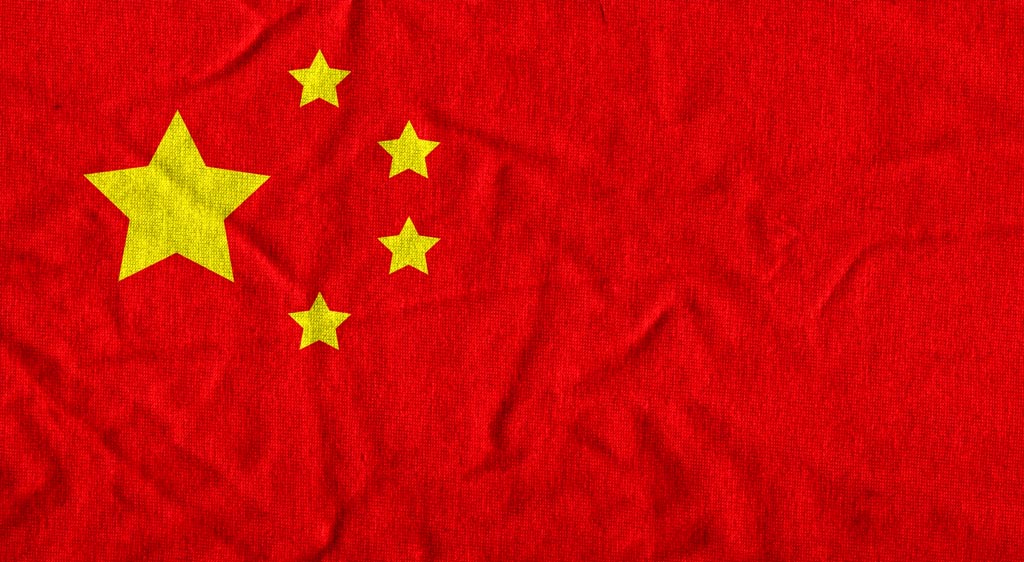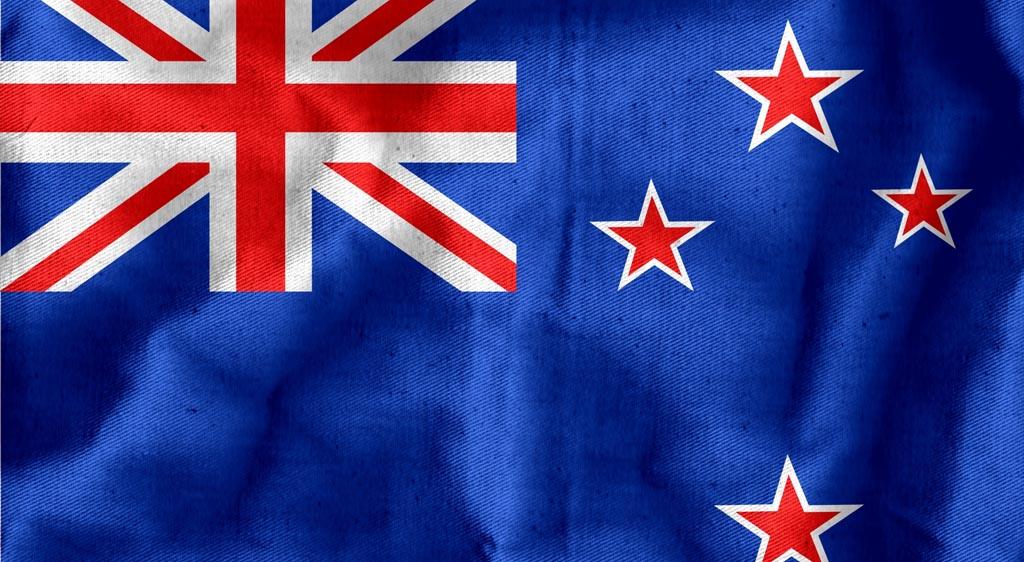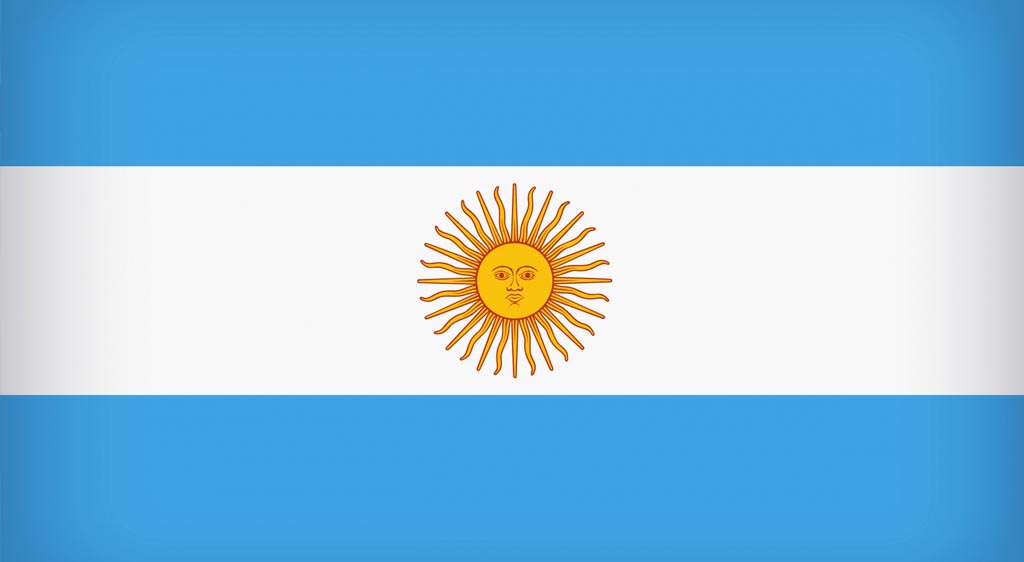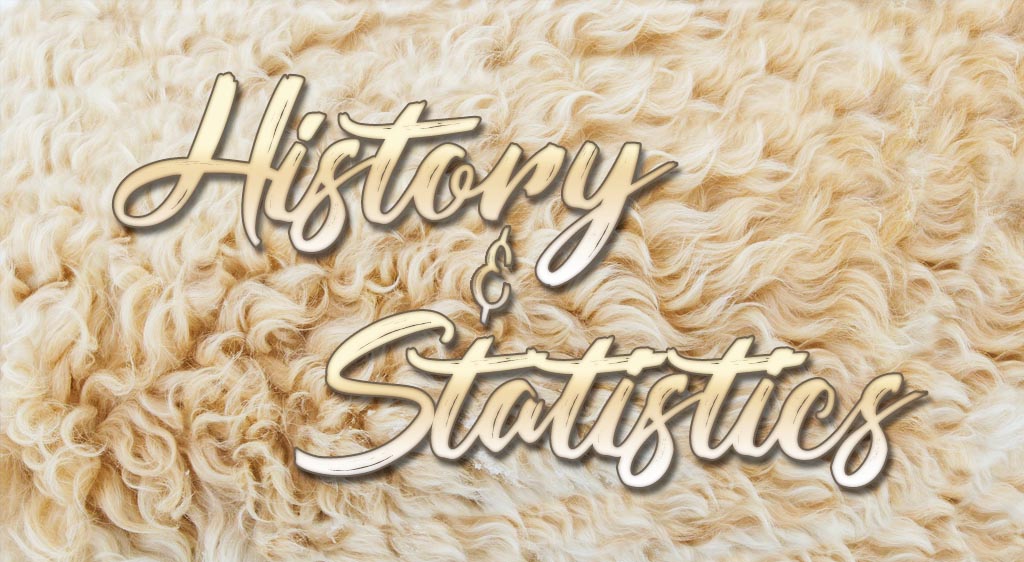Countries that Produce Wool
Wool has been around for centuries, and although we already have other synthetic and natural textiles, wool still has its place today. Wool has properties unique only to itself, which still makes it a desirable material. The comfort, softness, and durability of wool are already obvious, which is why it is ideal for clothing. However, there are other special properties. Wool is used in latex mattresses, in which it gives a great encasement or barrier cloth. It also cushions the joints and muscles, wicks moisture from the body, and keeps dust mite away. Besides these features, wool is also a natural fire retardant, water resistant, and a blocker of UV. Moreover, wool, being a natural material that sheep produces, give developing countries a simple and cheap, yet profitable industry.
Please link to us if you find any information useful on this page. It helps us out . Thank you.
Highlights on Wool and the Countries that Produce Wool
- Australia is consistently the number 1 producer of wool, but is sometimes overtaken by China.
- Between 2016 and 2017, the value of Australian wool exports was around $3.615 billion.
- In 2018, 1.155 million kg of clean raw wool were produced from sheep around the world.
- Around 500 different breeds of sheep grow wool in various colors, textures, and lengths.
- Only around 1% of wool is used for apparel. Other uses include furniture, carpets, and more.
- Around 1% of the world’s sheep are organically managed.
- Wool is the 509th most traded product.
- The most wool sheared from a sheep in a single shearing is 41.10 kg.
Countries that Produce Wool
Australia flag © icon0
1. Australia
Australia is the top producer of wool in the world, contributing roughly 25% of global wool production and having about 6% of the total sheep in the world. The country prides itself with its premium quality fine wool. Wool production continues to be one of the most important agricultural industries. In 2016, the country produced 324,900 tonnes of wool. The gross value of Australian wool is about $2.96 billion, which is bigger by 10.8% compared with that of 2015. All Australian states except the Northern Territory produce wool. The state that produces the most amount of wool is New South Wales, followed by Victoria, Western Australia and South Australia.
China flag © icon0
2. China
China contributes to approximately 18% of global wool production. Ironically, China is also the top importer of wool and the top retail consumer of wool clothing. The Chinese domestic retail market accounts between 50 to 60% of the country’s imports of raw wool. Between 2016 and 2017, China imported 53% of the global production of wool. This number rose to 65% in 2017. The country imports roughly 75% of its wool from Australia. On the other hand, China exports most of its wool to India, followed by South Korea, and Japan. From time to time, China overtakes Australia in wool production, but it still cannot match Australia’s wool quality.
United States flag © Petr Kratochvil
3. United States
The US contributes to around 17% of global wool production. In 2019, the US produced more than 10 million kg of wool. US wool competes with coarser wools of New Zealand and the finer wools of Australia. Out of all the states, Texas produces the most wool, followed by Colorado, California, Utah, and Wyoming. As of January 1, 2020, the US has 5.20 million sheep and lambs, with Texas having 735,000. The average sheep in the US can produce roughly 3.3 kg of wool per year.
New Zealand flag © icon0
4. New Zealand
New Zealand contributes to between 9 and 11% of global wool production even though it only has around 2% of the sheep in the world. In 2015, the value of wool exported from New Zealand saw its peak at $804,990,000. This value gradually declined to $542,550,000. In 2020, it is estimated that it will rise again to $570,000,000. New Zealand exports about 45% of its wool to China. Most of New Zealand’s wool exports are ‘strong wool’, largely used in woolen carpets. On the other hand, 54% of New Zealand’s wool imports come from the United Kingdom, which is followed by Australia, and China. Aside from the typical garments, wool has other applications in New Zealand, namely, surfboards, shoes, and anti-pollution face masks.
Argentina flag © Paul Brennan
5. Argentina
Argentina contributes roughly 3% of global wool production. In particular, Argentina is a leading producer of Merino wool. Moreover, out of the countries in South America, Argentina has the most sheep and produces the most wool. Argentinian wool is fine to medium. Most of the sheep, and therefore wool production, in the country is in Patagonia, which is a large region of land Argentina shares with Chile. In 2017, Argentina exported $213 million worth of wool It exports around 50% of its wool to China, followed by Czech Republic and Uruguay. Interestingly, Argentina imports wool from South Africa and Belgium-Luxembourg in around equal amounts. After Argentina, other countries that produce wool are Turkey, Iran, the United Kingdom, India, Sudan, and South Africa which contribute between 1 to 2% of global productions. Other countries that produce wool have insignificant individual contributions to global production. However, when you combine the amount of wool these other countries produce, they contribute roughly 50% of the total.
Countries that Produce Wool: Statistics and History
6. The Australian wool industry dates back to 1797.
The industry was started by Captain Henry Waterhouse and Lieutenant William Kent who imported 26 Spanish Merino sheep. In 1807, the first Australian wool was sent to England for sale.
7. However, it was further back in 1788 when the first sheep arrived in Australia.
The Merino sheep were not the first to arrive in Australia. The first were 29 fat-tailed sheep that arrived with the First Fleet. These sheep were from Cape of Good Hope in South Africa. Unfortunately, the Australian environment was not ideal for them. They also did not make good quality wool.
8. The first Merino sheep in Australia could only produce 1.5 kg of wool per fleece.
However, through selective breeding, the Merino sheep were eventually able to grow fleece that weighed 8 kg or more.
9. China has about 14% of the total sheep in the world.
However, China’s second-ranking in the wool industry even though it has the most sheep in the world may be due to several challenges in wool production. Up to 90% of Chinese farms in the nation’s northern and western sheep production regions use blades or scissor-type shears to harvest wool. Moreover, the gritty dust typically reduces clean fleece yields of many Chinese farms to as low as 40%. The farmers also prioritize meat production over wool.
10. China developed a new sheep breed whose wool is as thin as 19.1 μm.
The Ministry of Agriculture in China announced the new breed as Mountain Merino. It can adapt in the coldness and aridness of high altitude between 2,400 and 4,070 m. The Mountain Merino is a cross between a male Australia Merino and a female Gansu mountain fine-wool sheep local to the northwest China’s Gansu Province.
11. In 2016, researchers in Xinjiang Academy of Zootechnical Science used gene editing to develop a new breed of sheep with different coat colors.
The gene-editing method they used was CRISPR-Cas9, and it was the first time this method was used to change the coat of an animal larger than a mouse. Two of the sheep had badger face with black coat, another two had black coat with white spots, and a fifth had brown coat with light pigments in the ventral region, like unstirred cappuccino.
12. The US sheep industry dates back to the second voyage of Columbus in 1493.
Colonists mainly used the sheep for wool and other textiles. By the 1600s, sheep were in different parts of the US. However, cultivation was a struggle because of obstacles such as predators (mainly wolves) and severe winters. Thus, efforts were made to increase sheep flock to clothe the people. For example, In Connecticut in 1666, sheep were exempted from taxation. Moreover, male residents that were at least 14 years of age were required to work one day each year clearing away underbrush to extend the area of sheep pasture.
13. Fine wool with a diameter of 25 μm or less accounts for more than 50% of US wool production.
The demand for wool has gone down since the 1940s when synthetic fibers entered the textile industry. As of April 21, 2020, graded wool prices range between $1.13 and $3.68 per pound.
14. There are about 5.6 sheep for every person in New Zealand.
However, back in 1982, there were 22 sheep per person.
15. The first 2 sheep in New Zealand only survived for a few days.
In the 2nd voyage of British explorer James in 1773, he released an ewe and a ram in Queen Charlotte Sound, New Zealand. They died after eating poisonous plants. By the 1850s, wool became New Zealand’s main export.
16. Between 190 and 1951, New Zealand wool prices rose 130%.
This period is known as the wool boom. During this time, wool prices spiked up when the US military ordered large amounts of wool for their campaign in the Korean war. However, after a year, prices fell down by 53% to levels similar to those in 1950.
17. The Romney sheep accounts for more than 50% of the sheep in New Zealand.
The first Romney sheep were imported in 1843 and were suited for the New Zealand topography and weather conditions.
18. About 2/3 of the wool in Argentina are finer than 24.5 μm.
The rest are mostly within 24.6 to 32.5 μm.
19. The Patagonia pastures are where 66% of Argentina’s sheep.
Patagonia is partly in Chile but mainly in Argentina. The number of sheep in Patagonia was at its highest at over 21 million sheep in 1952, but that number went down over the years.
20. In the 1950s, Argentina had the 3rd largest sheep population after Austriala and the Soviet Union.
During that time, Argentina was also the 4th largest producer of raw wool, exporting an average 330 million pounds of wool.
Conclusion
Although that demand for wool is no long as it was, it still has an industry that supports several economies. The use of wool has been around for thousands of years. Throughout those years, the wool industry experienced technological advancements that allowed it to persevere. Today, the wool industry is focused on innovations to increase sales by lowering prices and increasing production while simultaneously considering animal and environmental welfare. These innovations include genetic studies to develop better breeds and using machines for wool harvesting. As long as the leaders in the industry continue to take creative and technological initiatives to remain significant, wool is here to stay.
References
Science Learning Hub:
https://www.sciencelearn.org.nz/resources/875-wool-fibre-properties
Hilfiker et al., 1996:
https://journals.sagepub.com/doi/10.1177/004051759606600201
Reinert et al., 1997:
International Wool Textile Organization:
https://www.iwto.org/wool-production
Australian Department of Agriculture, Water, and the Environment:
https://www.agriculture.gov.au/ag-farm-food/meat-wool-dairy/wool
Common Objective:
https://www.commonobjective.co/article/global-wool-production-and-sustainable-standards
Global Organic Textile Standard:
http://www.global-standard.org/images/stories/Why_GOTS_Factsheets/GOTS_WoolPoster_June2015_low.pdf
Observatory of Economic Complexity:
https://oec.world/en/profile/hs92/5101/
Guinness World Records:
Wool Producers Australia:
https://woolproducers.com.au/about-us/wool-trade/
Farm Online National:
https://www.farmonline.com.au/story/3570160/unravelling-chinas-wool-enigma/
Stock and Land:
https://www.stockandland.com.au/story/6527855/tough-conditions-in-china-holds-back-wool/
Biz Community:
https://www.bizcommunity.com/Article/1/741/176327.html
New Zealand Story:
https://www.nzstory.govt.nz/stories/5-things-you-didnt-know-about-new-zealand-wool/
Agricultural Marketing Resource Center:
https://www.agmrc.org/commodities-products/livestock/lamb/wool-profile
World Atlas:
https://www.worldatlas.com/articles/the-world-s-top-wool-producing-countries.html
US Department of Agriculture:
https://www.nass.usda.gov/Publications/Todays_Reports/reports/shep0120.pdf
International Wool Textile Organization:
https://www.iwto.org/events/2018-wool-round-table
Food and Agriculture Organization:
http://www.fao.org/3/i0709e/i0709e07.pdf
Trend Economy:
https://trendeconomy.com/data/h2/Argentina/5101
National Museum Australia:
https://www.nma.gov.au/defining-moments/resources/merino-sheep-introduced
Learn About Wool:
https://www.learnaboutwool.com/globalassets/law/resources/factsheets/secondary/gd0317-secondary-fact-sheet_f1_v4.pdf
China.org:
http://www.china.org.cn/environment/2016-01/13/content_37563876.htm
Zhang et al., 2017:
https://www.nature.com/articles/s41598-017-08636-0
National Academy of Sciences:
http://dels.nas.edu/resources/static-assets/materials-based-on-reports/reports-in-brief/SheepFinal.pdf
Agricultural History Society:
https://www.jstor.org/stable/pdf/44216164.pdf
US Department of Agriculture:
https://www.fsa.usda.gov/Internet/FSA_EPAS_Reports/wamrp042120.pdf
New Zealand Herald:
https://www.nzherald.co.nz/the-country/news/article.cfm?c_id=16&objectid=12192340
New Zealand History:
https://nzhistory.govt.nz/first-sheep-released-in-new-zealand
Stats NZ:
New Zealand Sheep Breeders’ Association:
http://www.nzsheep.co.nz/index.php?page=romney
Food and Agriculture Organization:
http://www.fao.org/3/y8344e09.htm
Encyclopedia:
https://www.encyclopedia.com/humanities/encyclopedias-almanacs-transcripts-and-maps/wool-industry
International Wool Textile Organization:
https://www.iwto.org/history-wool
New South Wales Department of Primary Industries:
Persistence Market Research:
https://www.persistencemarketresearch.com/market-research/wool-market.asp
The Land:
https://www.theland.com.au/story/5504451/innovation-taking-the-wool-industry-forward/
Stelmack, A. K., Foster, K., & Hindman, D. (2014). Sustainable residential interiors, 2nd ed. Hoboken, New Jersey, USA: John Wiley & Sons, Inc.
Baker-Laporte, P., Elliott, E., & Banta, J. (2008). Prescriptions for a health house: A practical guide for architects, builders, & homeowners, 3rd ed. Gabriola Island, BC, Canada: New Society Publishers.





